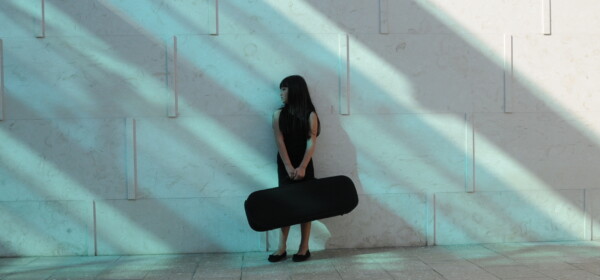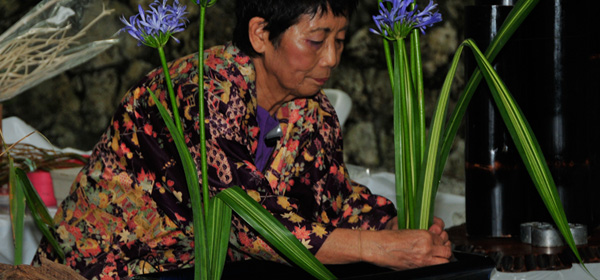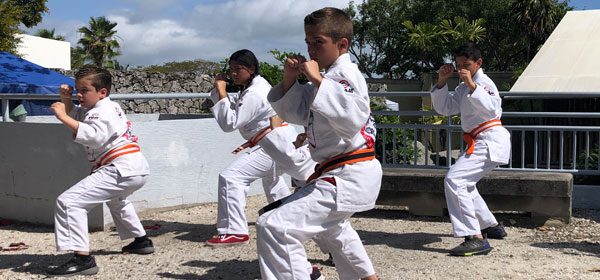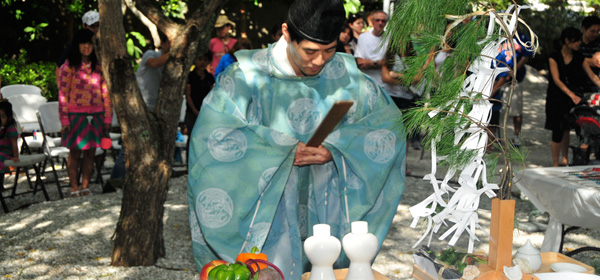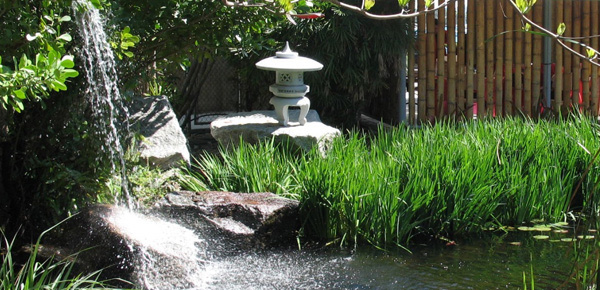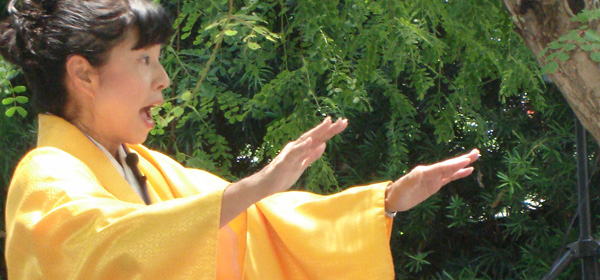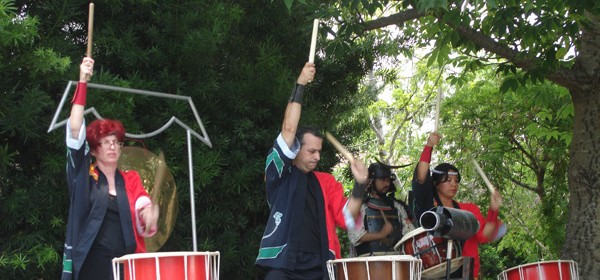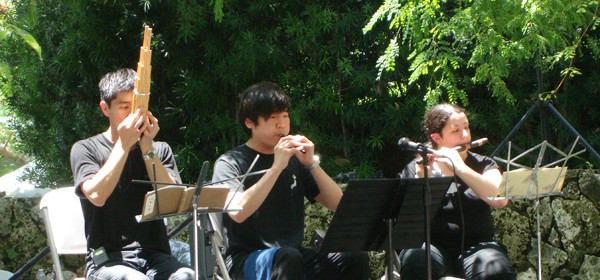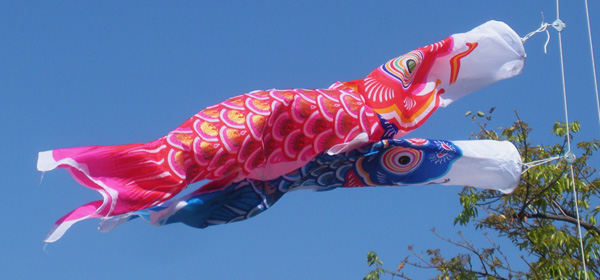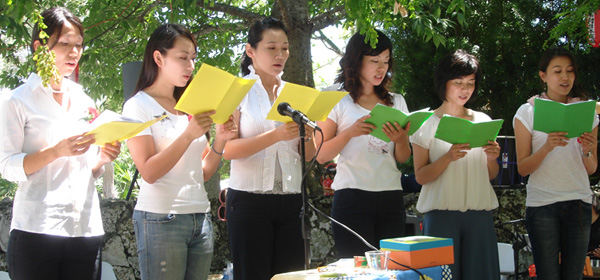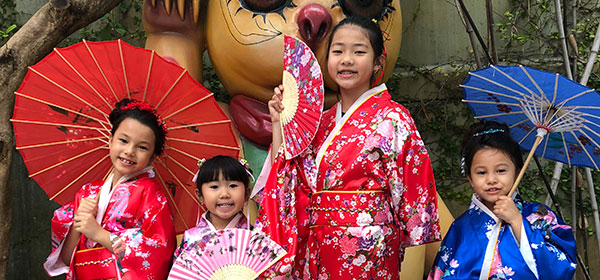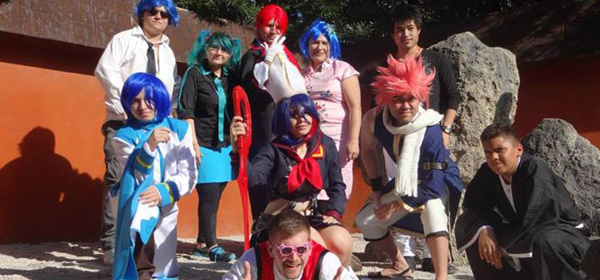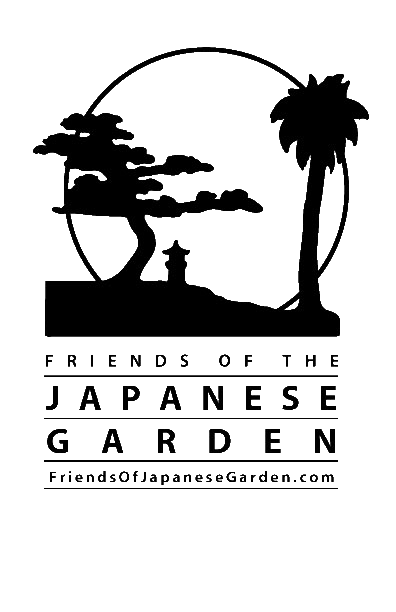In 1957, Mr. Kiyoshi Ichimura, Founder of Ricoh Corporation of Japan, attended a camera exhibition and show in the United States. On his way from Japan to the exhibition, he stopped in Miami. Looking east from his hotel room, he was stunned by the beauty of the city. He noticed one nearby area of land that appeared vacant and idle.
 Mr. Ichimura remarked to the American gentleman standing next to him that it would be wonderful if hundreds of cherry trees could be planted there with a great number of standing lanterns interspersed among them. The American gentleman, who happened to be a Miami city commissioner, responded to the remark with a question, “Are you willing to donate them?” Mr. Ichimura answered without hesitation,”Yes, any time, if you wish.”
Mr. Ichimura remarked to the American gentleman standing next to him that it would be wonderful if hundreds of cherry trees could be planted there with a great number of standing lanterns interspersed among them. The American gentleman, who happened to be a Miami city commissioner, responded to the remark with a question, “Are you willing to donate them?” Mr. Ichimura answered without hesitation,”Yes, any time, if you wish.”
Soon after, Mr. Ichimura received a phone call from the Mayor of Miami inquiring about the seriousness of his remarks. The Mayor reportedly said, “We will accept your gift wholeheartedly; however, we will need some preparation time to be ready to accept such a generous gift.”
The following year, when Mr. Ichimura attended the camera show, he again stopped in Miami and took the opportunity to present to the City of Miami an intended list of gifts. Sadly, it was determined that the climate in Miami was unsuited for cherry trees and furthermore that cherry trees could possibly carry a bacteria that prohibited their importation.
Mr. Ichimura immediately offered to donate 300 orchid trees which grew in Central China. These trees, after being accepted by the City of Miami, were planted along “Ichimura Road” which runs parallel to the MacArthur Causeway. Following this donation, he sent an 8-foot-tall Kasuga Stone Lantern and a 15- foot tall Hotei statue.
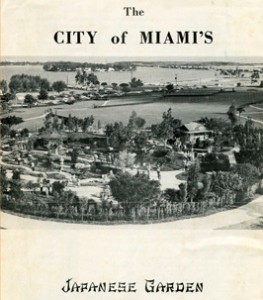 Finally, he sent 10 Japanese carpenters and numerous Japanese gardeners. The building of the authentic Japanese Garden began in earnest. On this little piece of land, Mr. Ichimura wanted to infuse an authentic Japanese cultural atmosphere and thus built a no-nail Azumaya (resting spot) as well as a teahouse named SAN-AI-AN. All work was completed in November of 1961. The garden was named SAN-AI-EN, “Three Loves Garden.”
Finally, he sent 10 Japanese carpenters and numerous Japanese gardeners. The building of the authentic Japanese Garden began in earnest. On this little piece of land, Mr. Ichimura wanted to infuse an authentic Japanese cultural atmosphere and thus built a no-nail Azumaya (resting spot) as well as a teahouse named SAN-AI-AN. All work was completed in November of 1961. The garden was named SAN-AI-EN, “Three Loves Garden.”
The Gift Commemorative Ceremony was attended by both Mr. and Mrs. Kiyoshi Ichimura after the completion of the Garden in 1961. At the Gift Commemorative Ceremony, a congratulatory message from President Kennedy was conveyed and Mr. Ichimura was made an honorary Citizen of the City of Miami. On that occasion, Mr. Ichimura expressed his most sincere feeling of satisfaction that he had been fortunate enough to be able to contribute in a small way to the friendship between the United States and Japan.
By 1984, twenty-three years after that memorable day in the life of the Garden, SAN-AI-EN had spiraled into total disrepair and neglect. At this time, circumstances brought the Vice President of Ricoh Americas, Mr. Hiroshi Inouye, to Miami. At a luncheon, he met the Director of the City of Miami Department of Parks and Recreation and Mrs. Agnes Youngblood, President of the Friends of the Japanese Garden.
Mrs. Youngblood explained the recent development of the non-profit organization, Friends of the Japanese Garden, to Mr. Inouye, who relayed the details to Mr. Hideo Yoshida, the Director of the General Secretariat of SAN-AI-KAI (the office which oversees the subsidiaries and all Ricoh-related companies). Mr. Hideo Yoshida, in turn, informed Shin-ichi Miyoshi, the Chairman of the Board, and thus began an enduring relationship between Mr. Miyoshi and the Friends of the Japanese Garden.
In 1987, Chairman Miyoshi visited Miami to initiate the conversation for a joint project to rebuild the Garden. The project was completed in December of 1988.
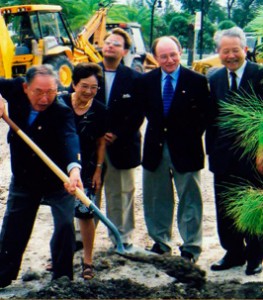 On August 24, 1992, category 5 Hurricane Andrew devastated Miami Dade County and destroyed the Japanese Garden along with over 250,000 homes and businesses throughout the county. It took 3 years to restore everything in the Garden. On April 21, 1995, the Mayor of Miami, Chairman of the Board of SAN-AI-KAI, Vice President Mr. Inouye, and about 100 members from the City of Miami and Japan attended the celebration of the completion of the restoration of the SAN-AI-EN. This event was written up in the local newspapers and viewed on the local television stations.
On August 24, 1992, category 5 Hurricane Andrew devastated Miami Dade County and destroyed the Japanese Garden along with over 250,000 homes and businesses throughout the county. It took 3 years to restore everything in the Garden. On April 21, 1995, the Mayor of Miami, Chairman of the Board of SAN-AI-KAI, Vice President Mr. Inouye, and about 100 members from the City of Miami and Japan attended the celebration of the completion of the restoration of the SAN-AI-EN. This event was written up in the local newspapers and viewed on the local television stations.
In 1996, the City of Miami Commission voted to approve the permanent move of Parrot Jungle to Watson Island. This decision necessitated the move of the Japanese Garden to a new location, east of Parrot Jungle. The construction of the new Garden took several years. Finally, April 29, 2004, witnessed the official opening of the new Japanese Garden, renamed ICHIMURA-EN.
The official complete name is now ICHIMURA MIAMI JAPAN GARDEN. April 29th is Green Day in the United States. This opening date for the Garden was chosen to celebrate the natural beauty of the Garden, the value of green in our lives, and also the birthday of the Japanese Emperor Showa. Since then, the Friends of the Japanese Garden celebrate Green Day/Spring Festival every year at the Garden.
ICHIMURA-EN is administered by the City of Miami Department of Parks and Recreation. The Friends of the Japanese Garden is the official Advisory Body that works closely with the City Department of Parks and also oversees the appropriateness of the Garden’s maintenance. The Friends of the Japanese Garden are constantly looking for ways to bring more Japanese elements to this beloved Garden.
Almost 50 years have passed since the opening of the Garden. The Garden, which bears the name of the Founder of Ricoh Corporation, still exists and is well cared for. RICOH / SAN-AI GROUP expresses deep appreciation to those members of the Friends of the Japanese Garden who show continued support and dedication.
